Cultural Highlights of the Pa Then Ethnic Group in Ha Giang
The Pa Then ethnic group in Ha Giang is one of the 22 ethnic groups that contribute to the great cultural variety of Ha Giang. Let’s explore the special facets of the Pa Then way of life and culture with MOTOGO Tours.
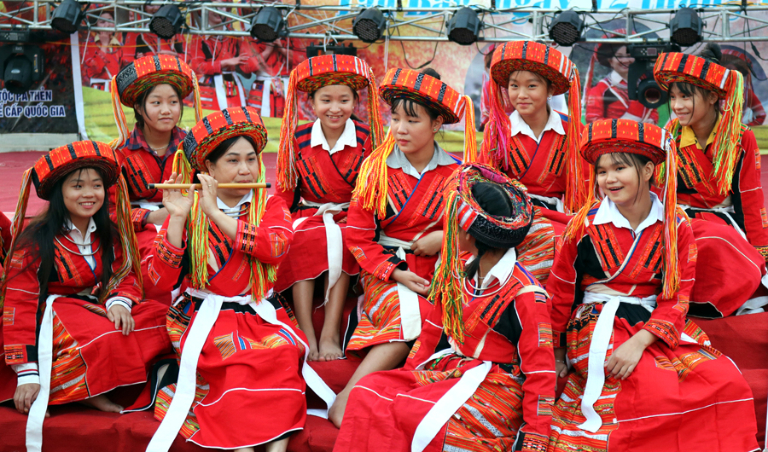
Where Do the Pa Then Ethnic Group in Ha Giang Live?
The Pa Then primarily inhabit Tuyen Quang province and several mountainous districts in Ha Giang. They refer to themselves as “Pa Hung,” while neighboring ethnic groups call them by various names, including “Pa Then,” “Meo Lai,” “Meo Hoa,” or “Meo Do.” Historical texts mention them as the “Bat Tien” tribe, and French scholars referred to them as “Man Pa Seng” or “Man Pa Teng.”
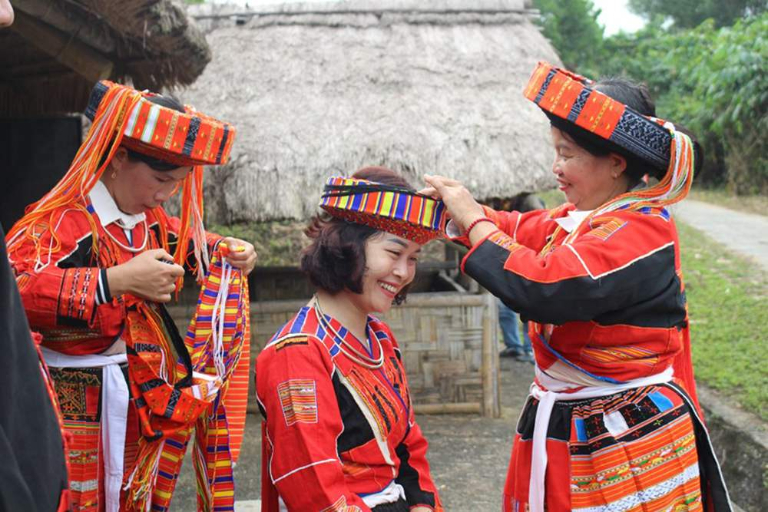
Together with the Cao Lan, San Chi, and San Diu ethnicities—all part of the Hmong-Dao language family—the Pa Then fall within the Man group. Ha Giang today boasts approximately 6,000 Pa Then residents mostly from the districts of Quang Binh, Bac Quang, Xin Man, and Hoang Su Phi with the most concentration in Quang Binh.
Legends Surrounding the Pa Then Ethnic Group in Ha Giang
Old stories handed down through the years claim that the Pa Then’s ancestors came from the Than Lo area of China, sometimes known as the Húng Dao or Thầu Dao. Along with other Dao clans, they moved to Vietnam around 200 to 300 years ago.
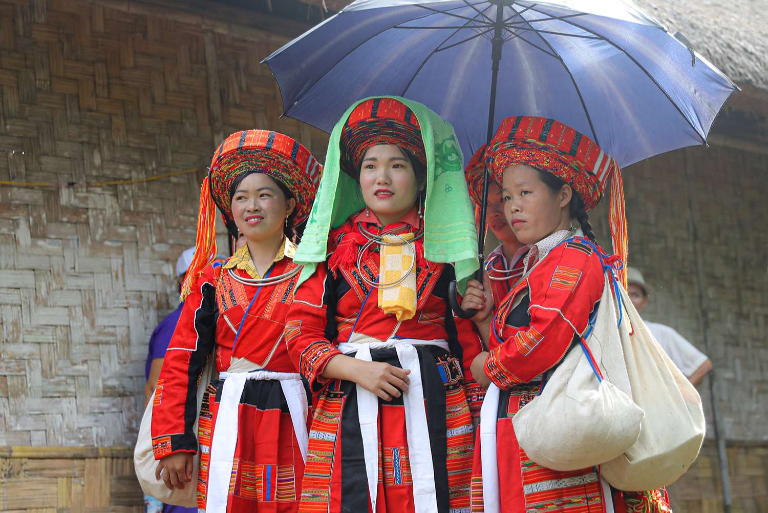
Elderly people still tell the younger generations about the trip their ancestors took over the sea to Vietnam. There are three Pa Then divisions depending on their settlement areas. The first comprises the communes of Trung Son (Yen Son) and Linh Phu (Chiem Hoa), where they live mixed with the Tay ethnic group, therefore impacting their way of life, culture, and clothing.
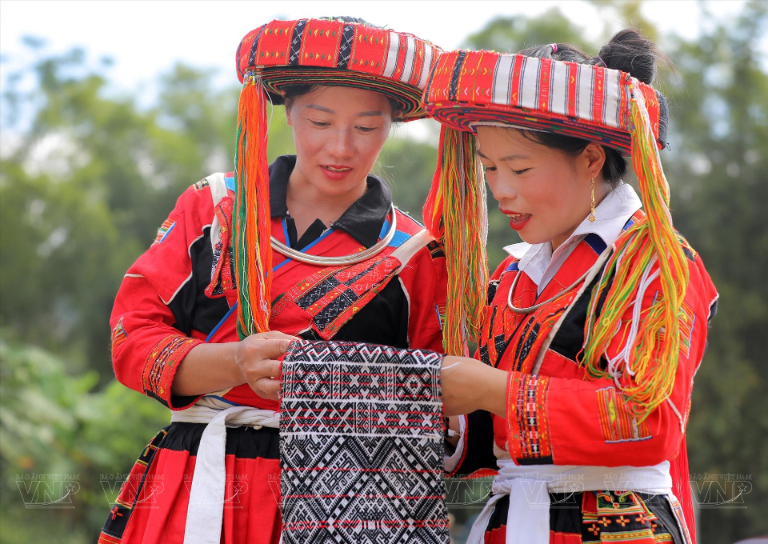
The second section consists of Huu San, Bac Quang, and Hong Quang in Chiem Hoa district where the Pa Then live alongside Dao, Tay, and Thuy populations. On the left bank of the Gam River in Bac Quang, the third area comprises Tân Sinh, Tân Lập, and Yen Binh where the Pa Then are more concentrated and have maintained their ancient customs and rituals.
>>> Exploring Culture of the Hmong People Ethnic Group in Ha Giang
Distinctive Aspects of Pa Then Life
Visitors should visit the cultural tourism village in My Bac commune, Quang Binh district, to really enjoy the special way of life of the Pa Then ethnic group in Ha Giang. There are 100% Pa Then people here who exhibit their unique way of living and energetic culture. Visitors can marvel at Pa Then girls here wearing vibrant traditional clothing and deftly creating beautiful brocade.

The Pa Then people’s traditional attire is well-known for its great aesthetic appeal, which combines unusual patterns with vivid colors. The variety of the patterns influences every person’s attire, thereby reflecting the workmanship of Pa Then women.

Rooted in the conviction that red represents fire and light, hence signifying the holy fire deity, Pa Then women typically dress in red. White, black, green, and yellow designs balance this to produce a vivid yet harmonic visual impact. These clothes accentuate Pa Then women’s delicate, subtle, and deft attractiveness when worn with jewelry like silver rings and three-leaf earrings.
Traditional Housing Architecture of the Pa Then Ethnic Group in Ha Giang
Ha Giang’s Pa Then residents mostly have three kinds of traditional homes: stilt houses, earth houses, and semi-stilt/semi-earth houses. Still in use today are many of these classic residences.Usually possessing complex joints, the homes are supported by carved wooden pillars resting on stone bases.

Carefully made, the beams, rafters, ridge beams, and purlins highlight the constructors’ expertise. While the walls of most conventional homes are composed of planks, most of them have tile roofs. At least two windows are included to guarantee optimum ventilation; the doors are made of strong wood.
Still, some homes have been built using brick, sand, and cement using wooden columns, rafters, and roof frames. Even while this classic approach is still used, its popularity is declining as many Pa Families with better financial situation are then choosing newer and more practical architectural designs.
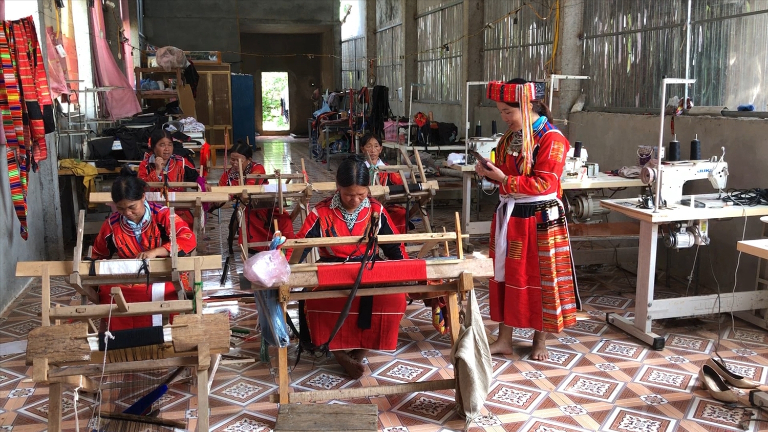
Traditional Pa Then houses reveal a relatively consistent layout for living spaces. In a typical three-section wooden house, a large door opens into the central area, where guests are received. A main altar is positioned on the wall opposite the main entrance, with a secondary altar nearby. Behind the secondary altar, a partition separates the master bedroom, and in front of this altar, a bed is provided for the eldest son.
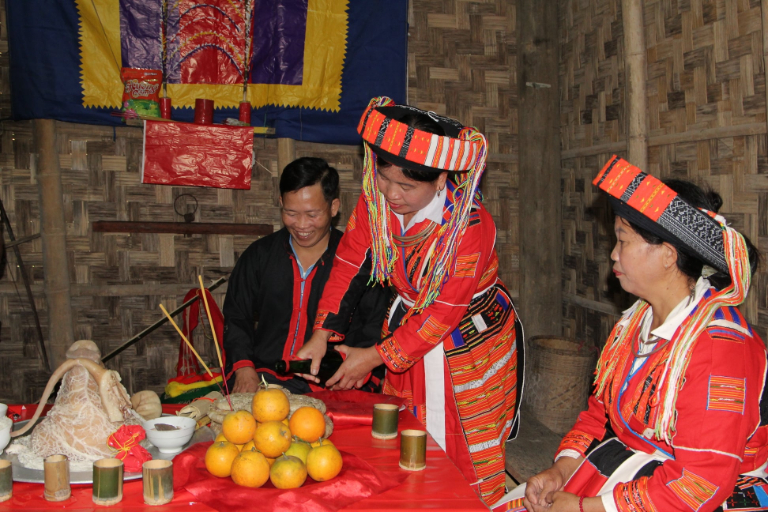
The cooking area and stove are located in the adjacent section, facing east. This kitchen is equipped with shelves for dishes and other household items, while an attic above stores grains. Approximately 1.5 to 2 meters above the cooking area, there’s a platform for drying rice, woven items, and smoked meats. The third section, which lacks a kitchen, is divided into a sleeping area for the eldest daughter, with the possibility of adding an extra bed in the corner.
Festivals and Traditions Unique to the Pa Then Culture
Fire Jumping Festival
The Pa Then ethnic group in Ha Giang celebrate the Fire Jumping Festival, a unique and sacred event held periodically. This festival takes place from the 16th day of the 10th lunar month to the 15th of the following lunar year. The Pa Then hold a deep belief that deities protect them from danger and misfortune, with the highest deity being the fire god.
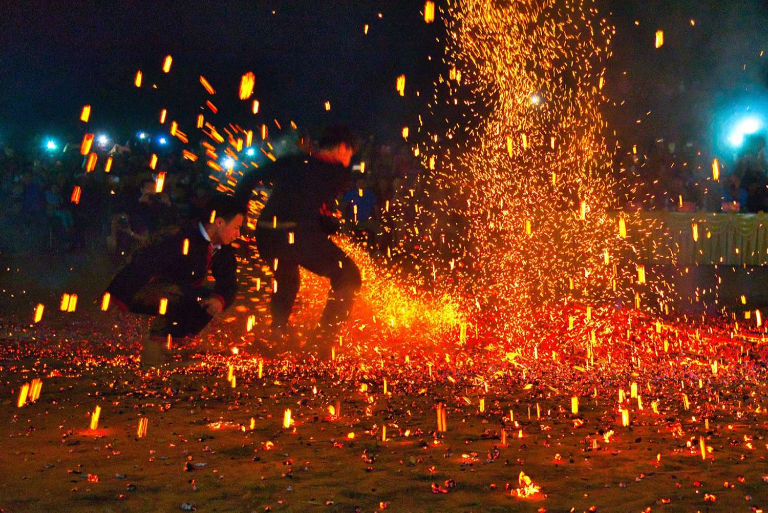
Initially, a shaman conducts a ritual to seek permission from the land spirits to hold the fire-jumping ceremony. A large bonfire is then lit, and once the coals glow red, the shaman guides participants to sit before him, channeling their energy before they leap into the fire, causing sparks to fly. The cheers and encouragement from local residents and tourists bolster the courage of those jumping.
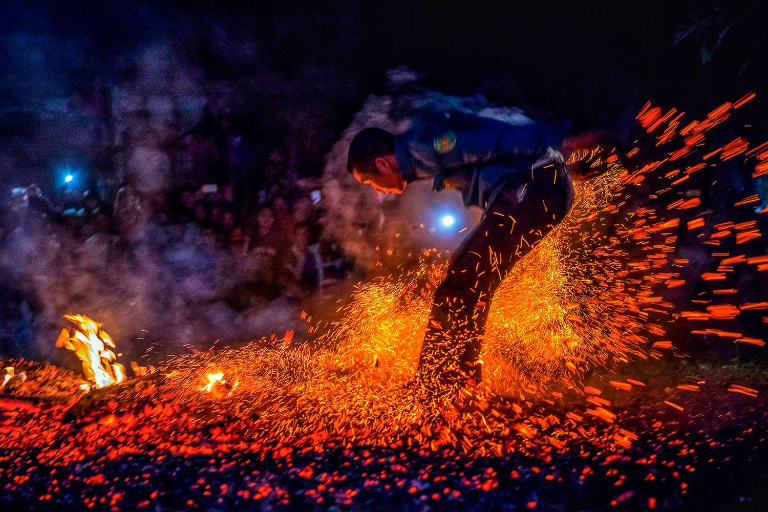
The Fire Jumping Festival was named a National Intangible Cultural Heritage by the Ministry of Culture and Tourism in 2013 based on its great cultural value and strong beliefs. Since then, this celebration has drawn many of tourists and become a highlight of Ha Giang’s tourism scene.
The Kéo Chày Festival
The Kéo Chày Festival is another significant festival for the Pa Then since it represents community solidarity and gives the locals a chance to gather together following a plentiful crop. This celebration is also a plea for favors from gods for harmony, wealth, and peace inside families.
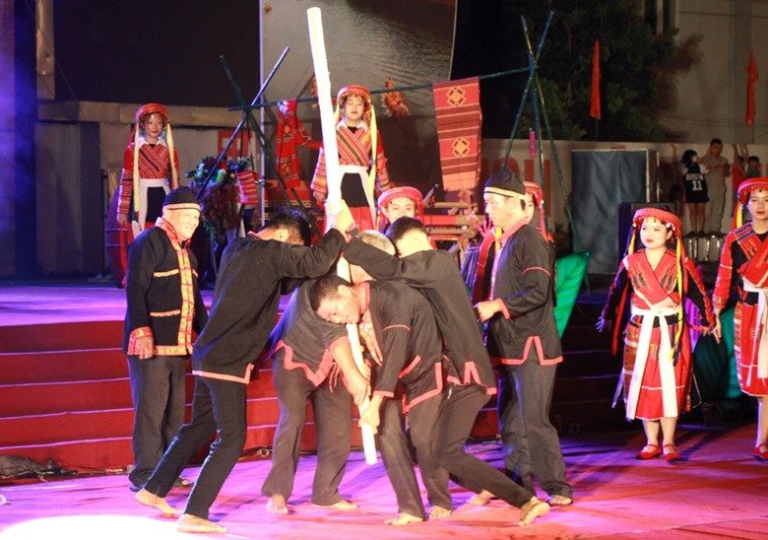
Before the festival begins, the shaman uses a wooden or bamboo pestle, about 10 cm in diameter and 2.5 to 3 meters long. He performs a spinning ritual while reciting incantations. Next, two strong young men are selected to hold the pestle upright, facing each other.
The shaman keeps chanting while they rotate the pestle, and miraculously the pestle seems to float above the ground. The two men attempt tirelessly to bring it down, but they are unable. The celebration ends when someone lowers the top or bottom of the pestle to the ground using their hands, therefore indicating its end.
Pa Then Marriage Customs
Regarding marital customs, the Pa Then place significant value on letting young men and women to freely meet one another. Should they establish a mutual bond, they will let their families know to start wedding planning. Still, the engagement rituals are somewhat complicated and usually call for three or four encounters between the two families before the wedding.
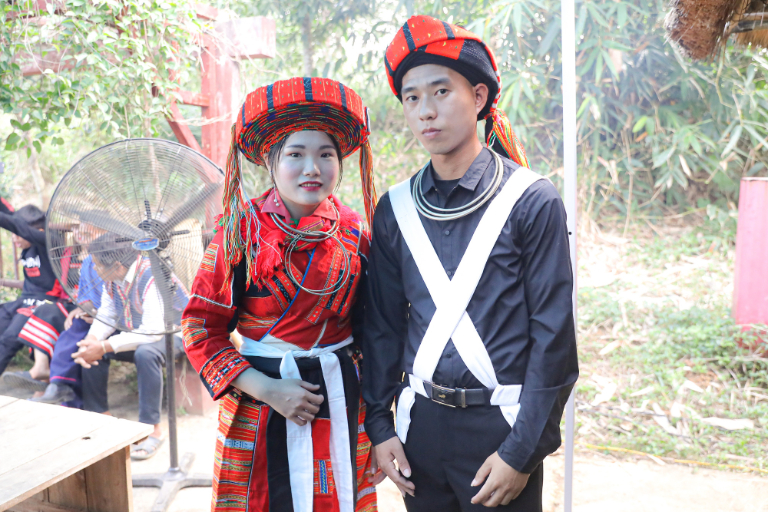
The night before the groom’s family arrives to escort the bride, the bride’s family holds a ceremony to “cut the ties.” The following day, the groom’s family also performs a ceremony to unify the couple. The bride is expected to cover her face with a scarf and remain seated until the evening of the wedding night, when she may finally remove it.
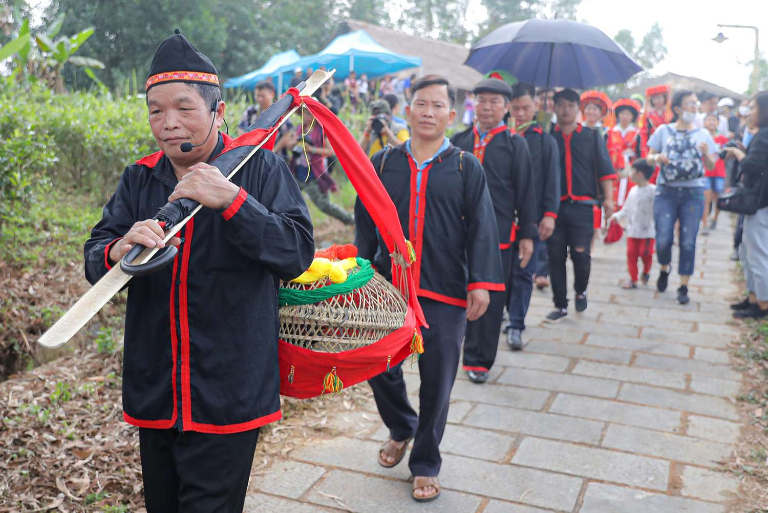
Traditionally, the Pa Then people follow monogamy—that is, they have pledged a lifetime commitment with one partner. This dedication is regarded very seriously; once they are husband and wife, they will be together always. Divorce is therefore forbidden among the Pa Then even in the face of conflicts or challenges.
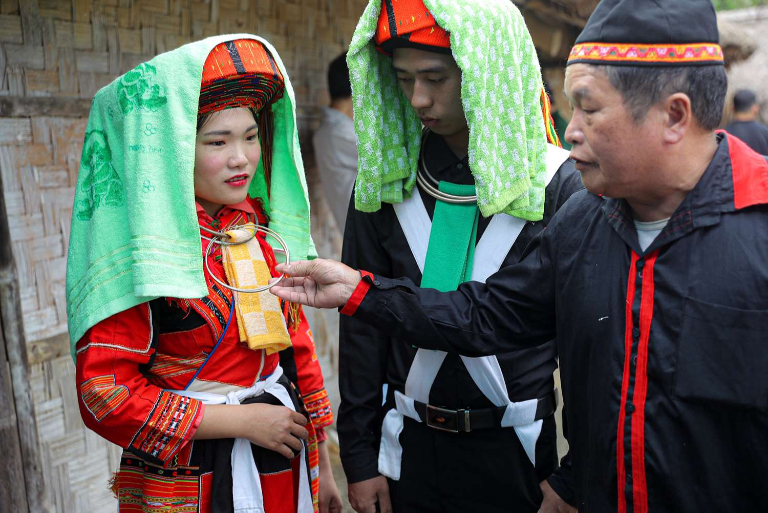
The Pa Then ethnic group embodies the rich cultural tapestry of Ha Giang. Their own customs, energetic celebrations, and close-knit communal structure offer an interesting window into a way of life that has lasted for centuries. Examining the Pa Then’s legacy not only respects their culture but also helps us to better appreciate the variety of human experience.
Related Posts:
- Ethnic Minorities in Ha Giang: Discovering Their Rich Traditions and Cultures
- Lo Lo Ethnic Minority Group in Ha Giang: Insights into Their Way of Life
- Understanding the Dao Ethnic Group in Ha Giang













Be the first to comment!